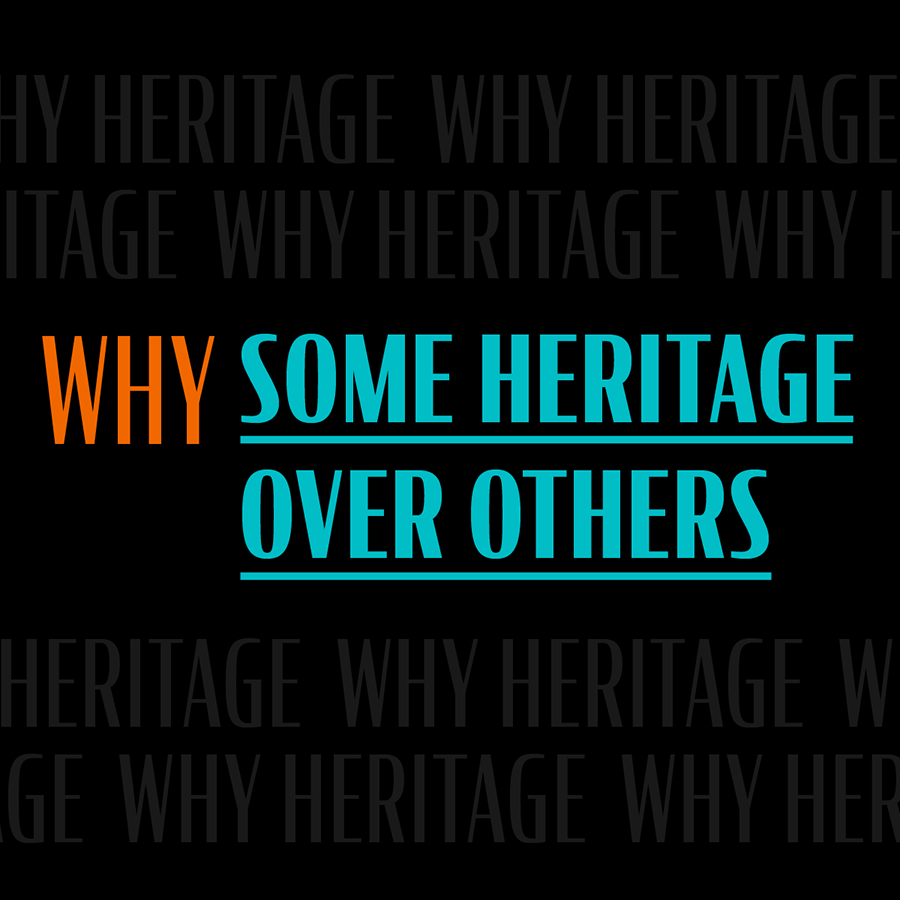Heritage
Why Some Heritage Over Others?
Published
January 24, 2024
By
Team

Becoming world heritage
International organisations, such as the United Nations Educational, Scientific and Cultural Organisation (UNESCO), play an important role in determining what is categorised as world heritage, but in doing so, they often fail to take into account more local or personal forms of memory that do not fit neatly into their assessment criteria. For instance, for a site, object, or practice to be formally recognised as world heritage, it would need to fulfill a certain set of benchmarks decided by UNESCO. The moment it is categorised as such, it is elevated from the realm of the everyday to become an official piece of heritage that needs to be protected, conserved, and valued by the whole of society.
However, in the preservation of such official forms of heritage, local memories, stories, or practices are often relegated to a lower priority, neglected or lost. A gap thus exists between what the international community, and what an individual or group might perceive as being worthy of conservation. A case in point can be seen in Vietnam, where the ancient town of Hoi An is categorised as a UNESCO World Heritage site due to its status as a well-preserved traditional Southeast Asian trading port. While the influx of visitors has helped to create jobs and boost the local economy, it has also ironically led to an erosion of the town’s native trading culture. Families that have lived in Hoi An for generations have been forced to relocate from the town’s center to its outskirts to make way for tourism, resulting in the loss of their traditional way of life.
Conserving the nation’s heritage
Governments also have the power to impose their own version of heritage over the lived experiences of communities and individuals. For countries, heritage conservation is often seen as a state prerogative, since it helps to rally diverse communities together and highlight shared values. Governments thus take special care in determining what constitutes as heritage on a national level since that is believed to embody the spirit and history of the country. The state is also often involved in the running of heritage institutions, as well the management and disbursement of funds for heritage-related projects. This means that narratives which are better aligned with state agendas usually have a higher chance of being elevated as national heritage.
For example, in China, national heritage sites, such as the Forbidden City and the Mausoleum of the First Qin Emperor, are used to promote the view that China is a rising power with a rich civilisation and history to draw on. On the other hand, the Chinese government is systematically erasing the religious and cultural heritage of the Uyghur minority by destroying Uyghur mosques and cemeteries. All these are seen as an attempt by the state to forcefully assimilate them into Han Chinese culture, which the international community has criticised as a deliberate act of cultural genocide. This erasure of heritage on the government’s part highlights how little power certain communities, in particular minority groups, have over the preservation of their own heritage and culture when subject to state control.
Commercialising heritage
Lastly, consumers have the power to dictate how heritage is preserved through choices made in popular consumption and tourism. More often than not, mass consumers are interested in viewing what is sensational and exotic, or seeking experiences that already fit into their preconceived notions of what a culture should look like. As such, economic profits are often prioritised over authenticity in the ways that certain forms of heritage are conserved and put on public display. We see this in some of the world’s greatest historic sites that welcome thousands of visitors annually. For example, in Machu Picchu, Peru, the growth of the tourism industry has led indigenous women from nearby communities to alter their appearance and behaviour, like dressing in bright-coloured clothing with baby animals, to match the expectations of tourists. Such depictions of culture in turn become the prevailing narrative for visitors who in turn leave with little knowledge about the true heritage value behind the locations they have just visited.
All in all, we will do well not to forget that heritage is constructed through a complex process which involves different stakeholders coming together to determine what should be valued and conserved by society. By remembering what is forgotten or neglected in the process can we have a better understanding and more genuine appreciation of what should be preserved from history.

